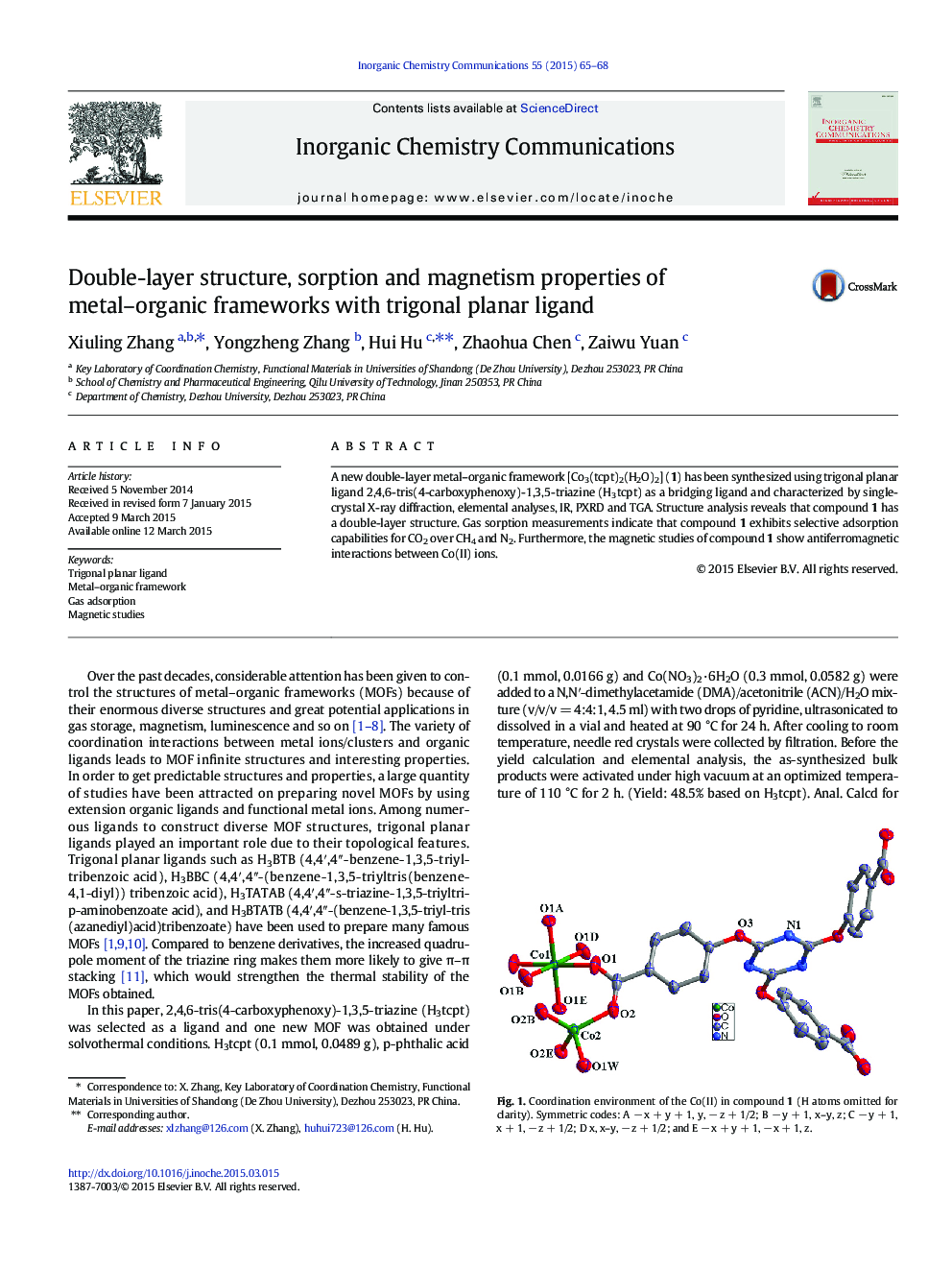| Article ID | Journal | Published Year | Pages | File Type |
|---|---|---|---|---|
| 1305441 | Inorganic Chemistry Communications | 2015 | 4 Pages |
•A new double-layer MOF [Co3(tcpt)2(H2O)2] has been synthesized.•The compound exhibits selective adsorption capabilities.•Magnetic studies of compound show antiferromagnetic interactions.
A new double-layer metal–organic framework [Co3(tcpt)2(H2O)2] (1) has been synthesized using trigonal planar ligand 2,4,6-tris(4-carboxyphenoxy)-1,3,5-triazine (H3tcpt) as a bridging ligand and characterized by single-crystal X-ray diffraction, elemental analyses, IR, PXRD and TGA. Structure analysis reveals that compound 1 has a double-layer structure. Gas sorption measurements indicate that compound 1 exhibits selective adsorption capabilities for CO2 over CH4 and N2. Furthermore, the magnetic studies of compound 1 show antiferromagnetic interactions between Co(II) ions.
Graphical abstractA new double-layer metal–organic framework [Co3(tcpt)2(H2O)2] (1) has been synthesized using trigonal planar ligand 2,4,6-tris(4-carboxyphenoxy)-1,3,5-triazine (H3tcpt) as a bridging ligand and characterized by single-crystal X-ray diffraction. Structure analysis reveals that compound 1 has a double-layer structure. Based on the CO2 adsorption isotherm at 195 K and 1 atm, the Brunauer–Emmett–Teller (BET) surface area of guest-free framework was estimated to be 380.4 m2 g− 1. Gas sorption measurement indicates that compound 1 exhibits selective adsorption capabilities for CO2 over CH4 and N2. Furthermore, the magnetic studies of compound 1 show antiferromagnetic interactions between Co(II) ions.Figure optionsDownload full-size imageDownload as PowerPoint slide
